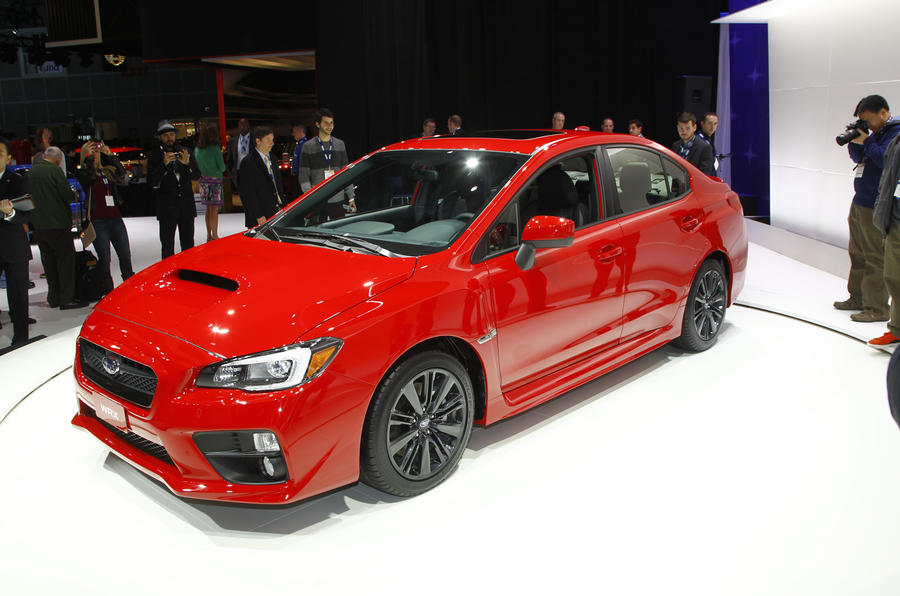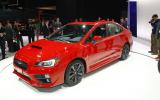Subaru has promised that the forthcoming Subaru WRX, unveiled at the LA motor show, is “the best-handling WRX ever” due to its stiffened chassis and new technology such as a torque vectoring system.
After teasing the Subaru WRX Concept version at the New York and Frankfurt shows earlier this year, the Japanese manufacturer lifted the covers on the definitive US specification WRX at Los Angeles.
The new model – which loses the 20in alloys and lightweight carbonfibre roof of the concept – affirms Subaru’s intention to prove that it can still produce appealing performance cars.
Built on a new platform, the new WRX features a bolder front design and aggressive stance than its predecessor. The new WRX body structure makes greater use of high-tensile strength steel than the previous model and features stiffening elements at key locations.
About 80 per cent of the body panels featured on the WRX are exclusive to the model, including the bonnet, front bumpers, rear doors and quarter panels. The WRX’s trademark air scoop is now set more deeply into the bonnet to provide better forward visibility for the driver.
Combined with the new electronic power steering system and specially tuned suspension, the stiffer chassis yields improved steering response. The WRX, which is equipped with 17in wheels and tyres as standard, also features a new, understeer-reducing torque vectoring system that distributes power to wheels with the most traction during cornering.
The new WRX is powered by a 2.0-litre, four-cylinder turbocharged boxer engine from the new Subaru Forester, which produces 264bhp at 5600rpm and 258lb ft between 2000-5200rpm. Power is sent to all four wheels via a six-speed manual transmission, although a Sport Lineartronic automatic is available as an option.
Models equipped with the auto ’box also have a powertrain management system that allowed the driver to toggle through Intelligent, Sport and Sport Sharp modes which are tailored to provide either fuel efficiency or more dynamic gear changes.
The wheelbase of the new WRX is 25mm longer than its predecessor, a factor that has enabled Subaru to design a roomier cabin. The windscreen is more raked than before, with the A-pillar pulled forward nearly 200mm at the base for better forward visibility, aided by a lower dashboard and narrower A-pillars.
Higher seating hip points, lower side sills and wider-opening doors make it easier to get into and out of the WRX. Rear seat passengers gain nearly 50mm of legroom and boot space is increased.




















Join the debate
Add your comment
Awful..
Disappointed Potential buyer
totally agree....!